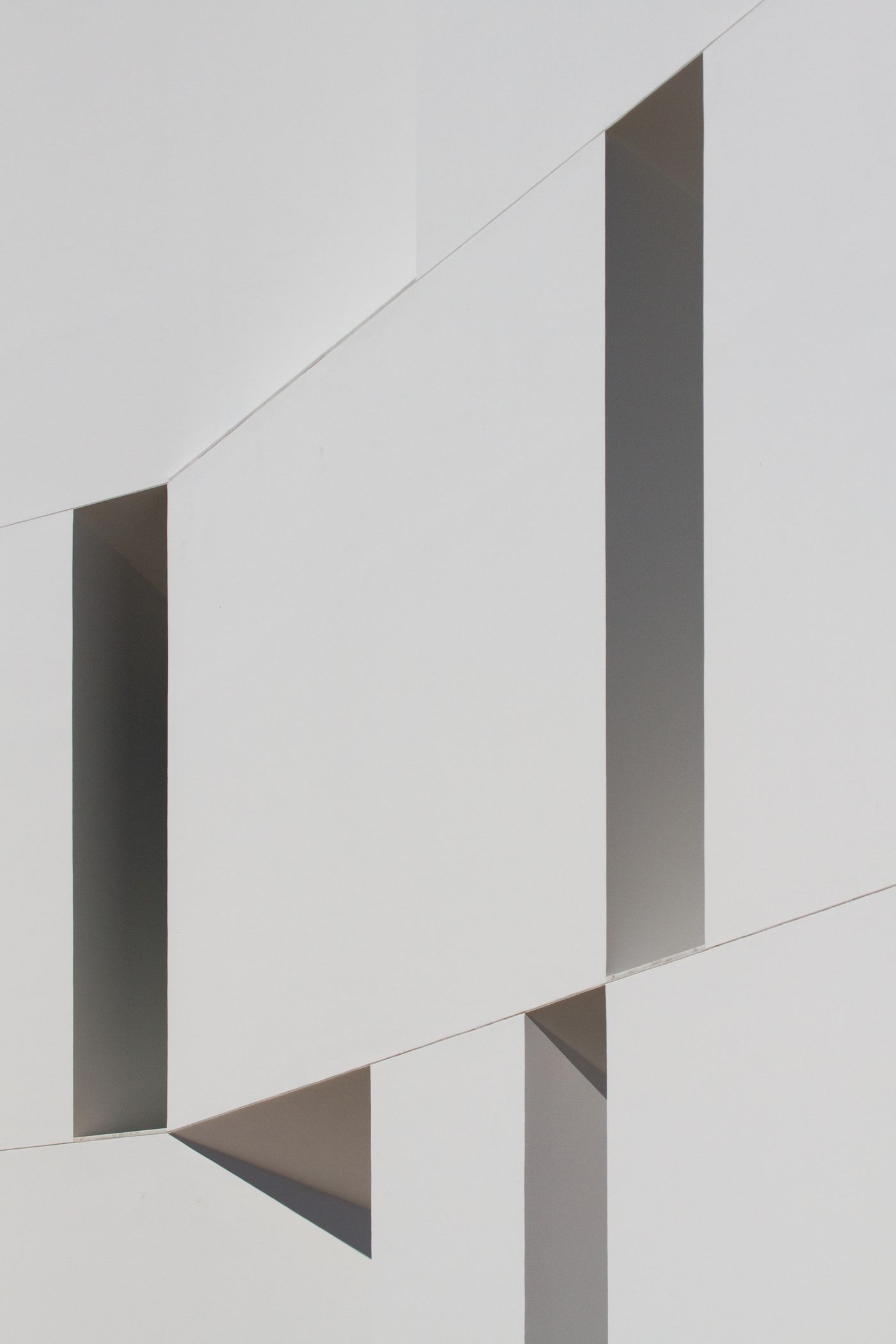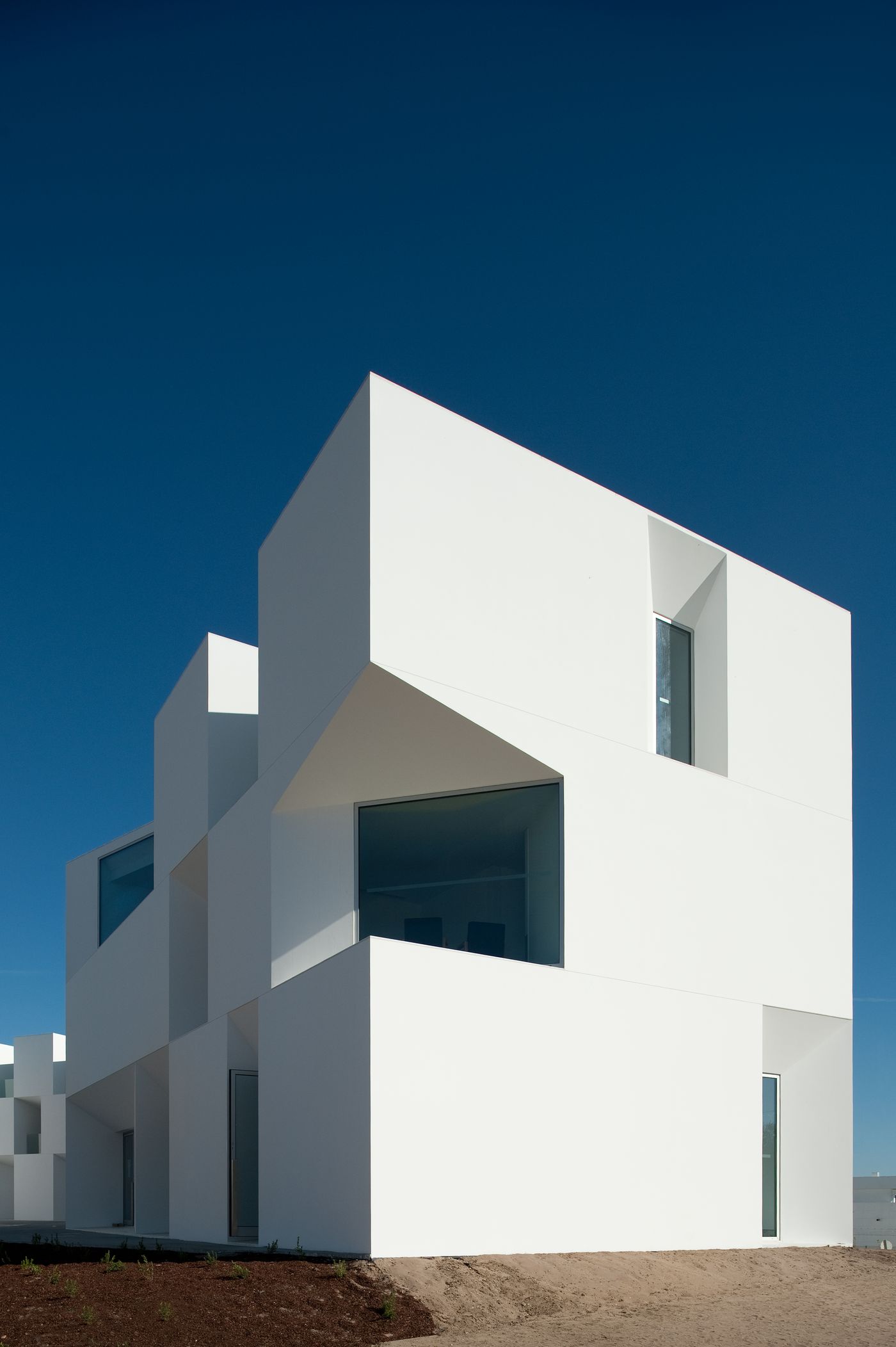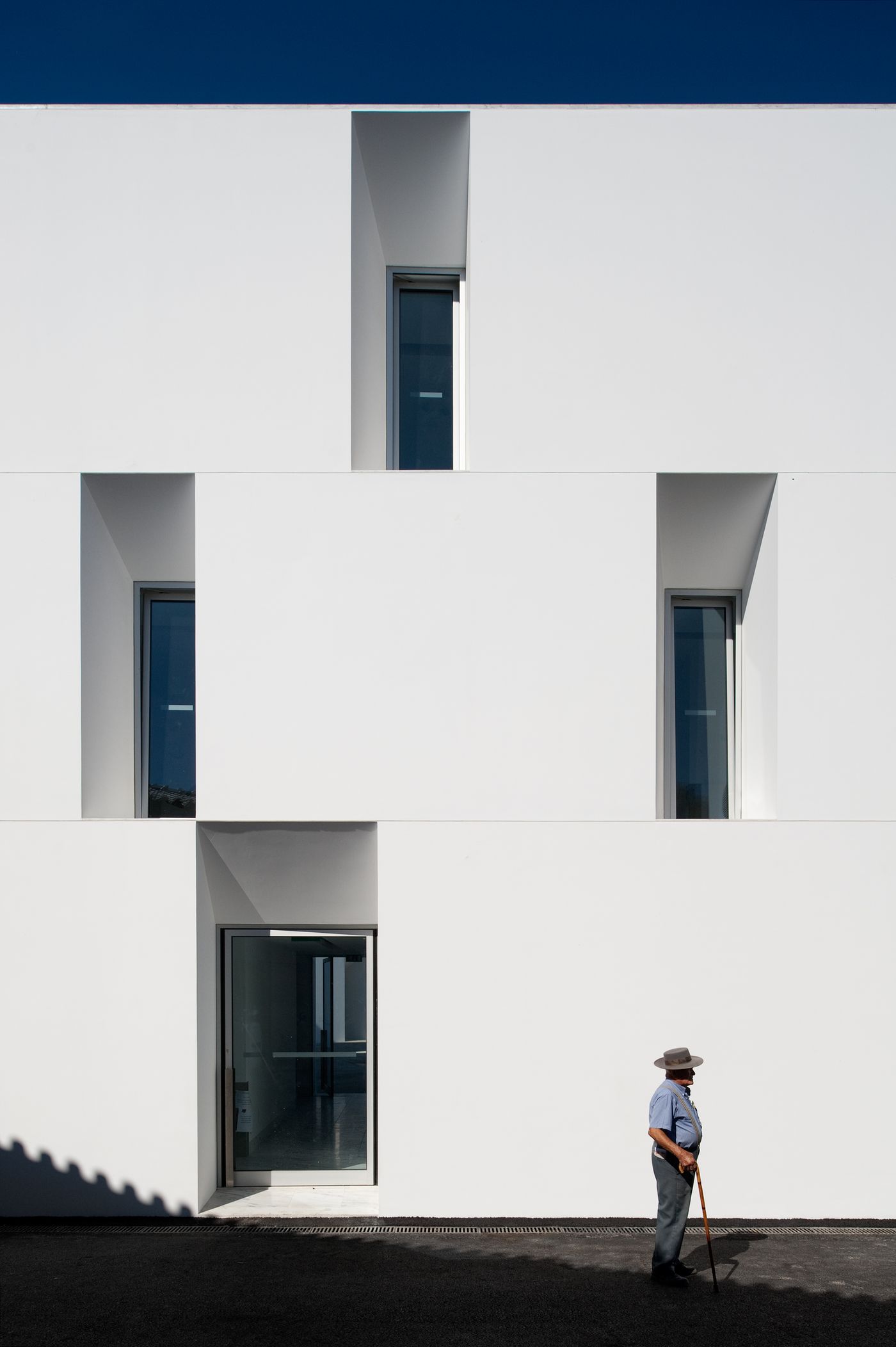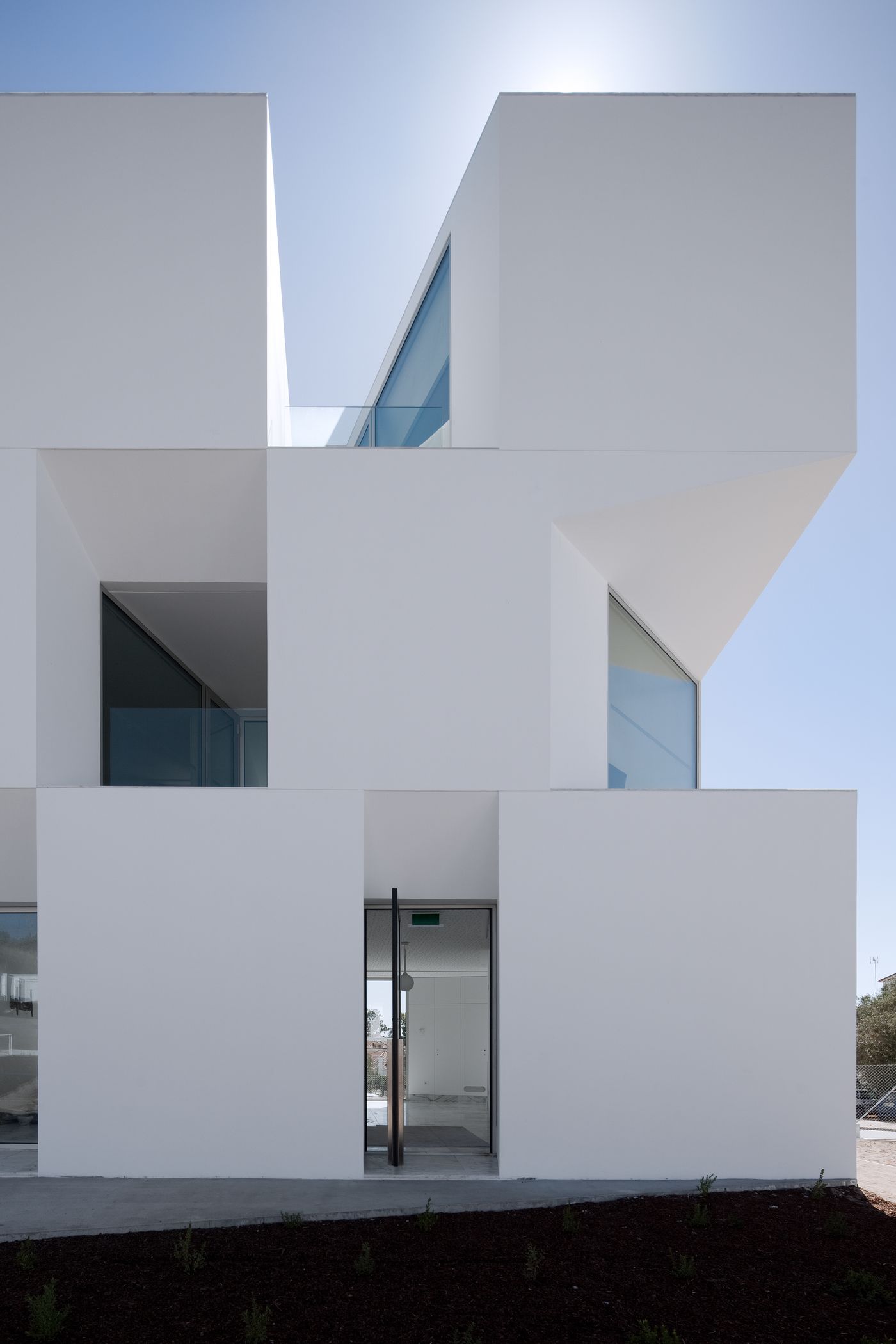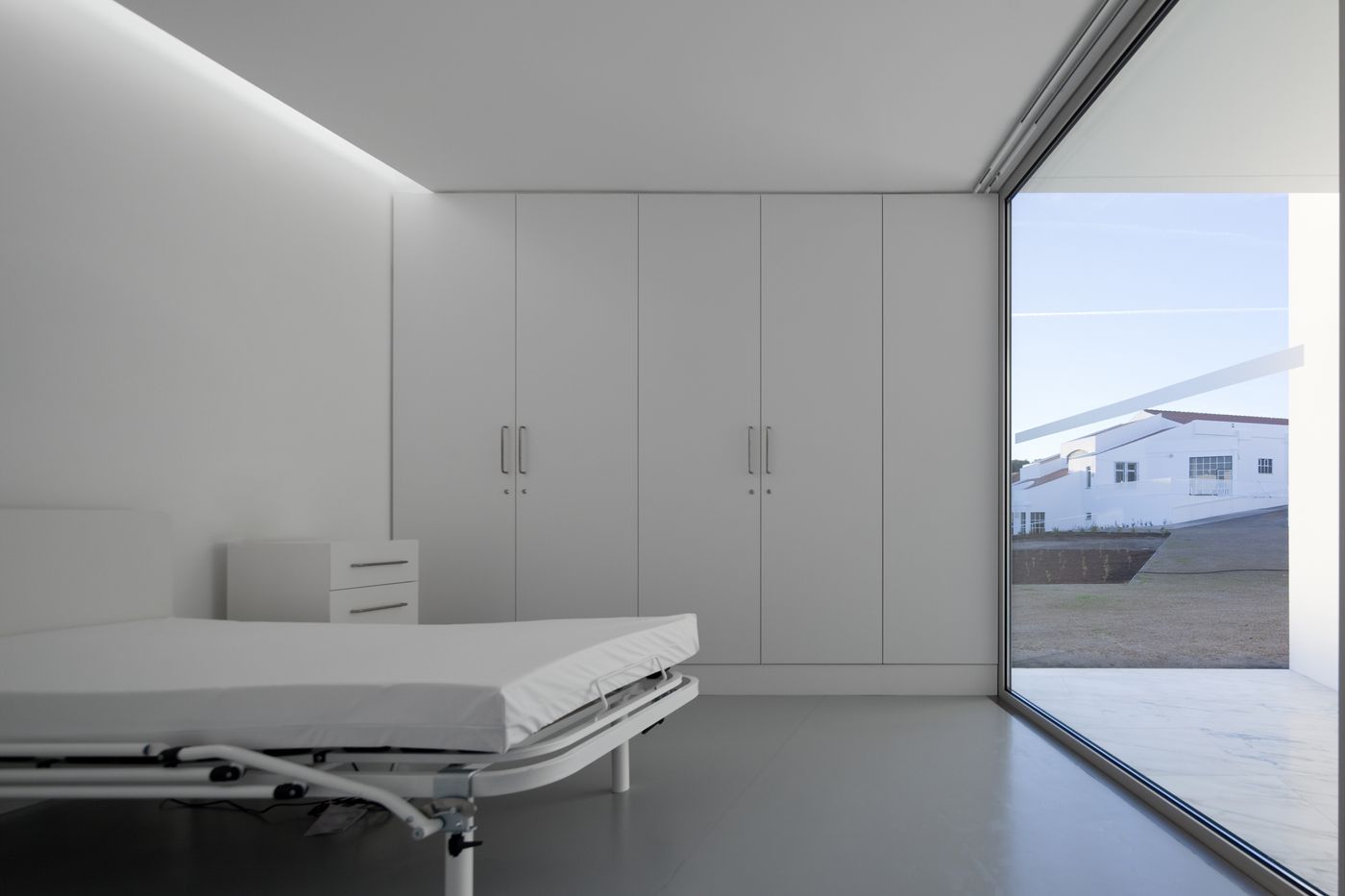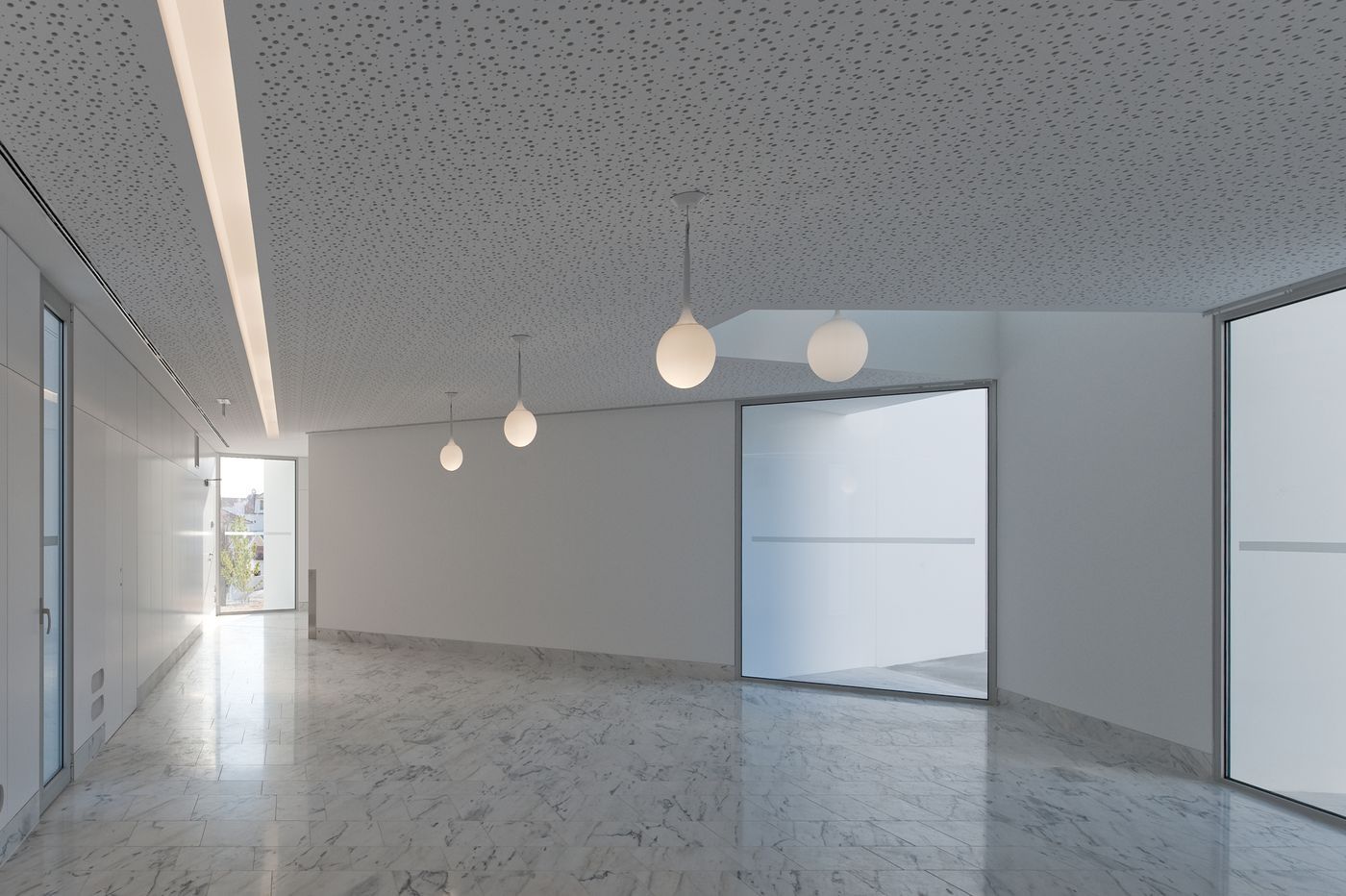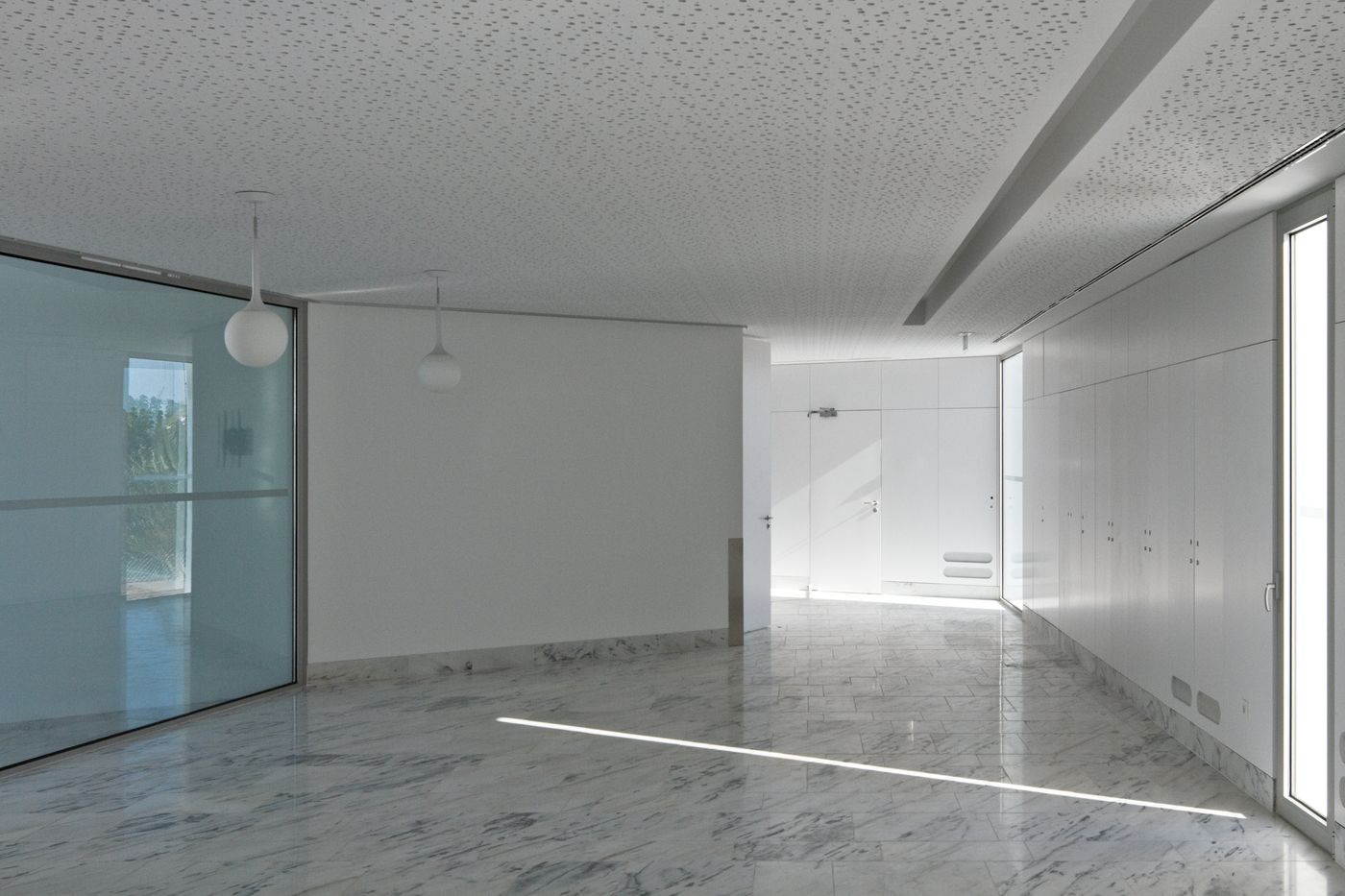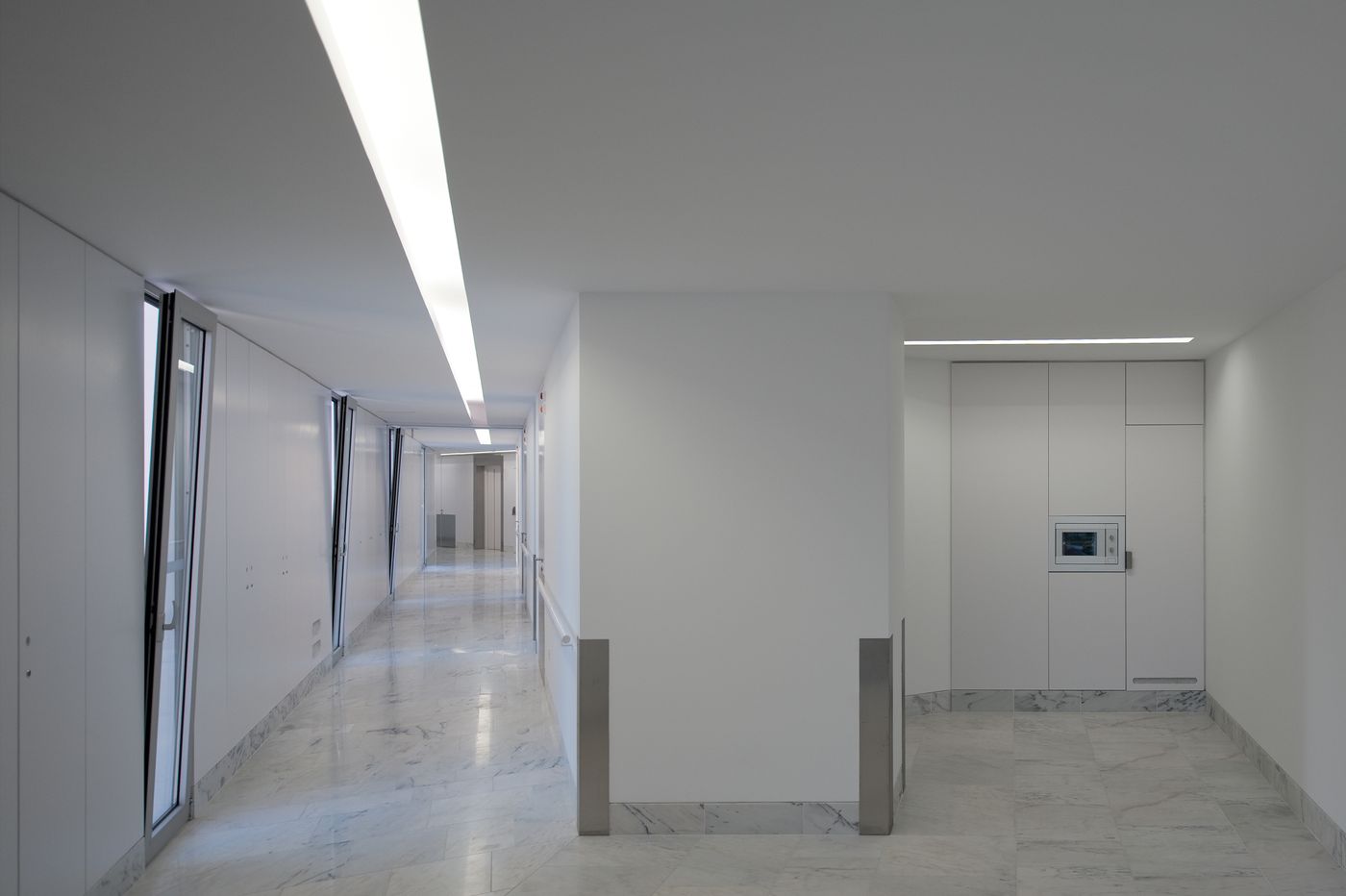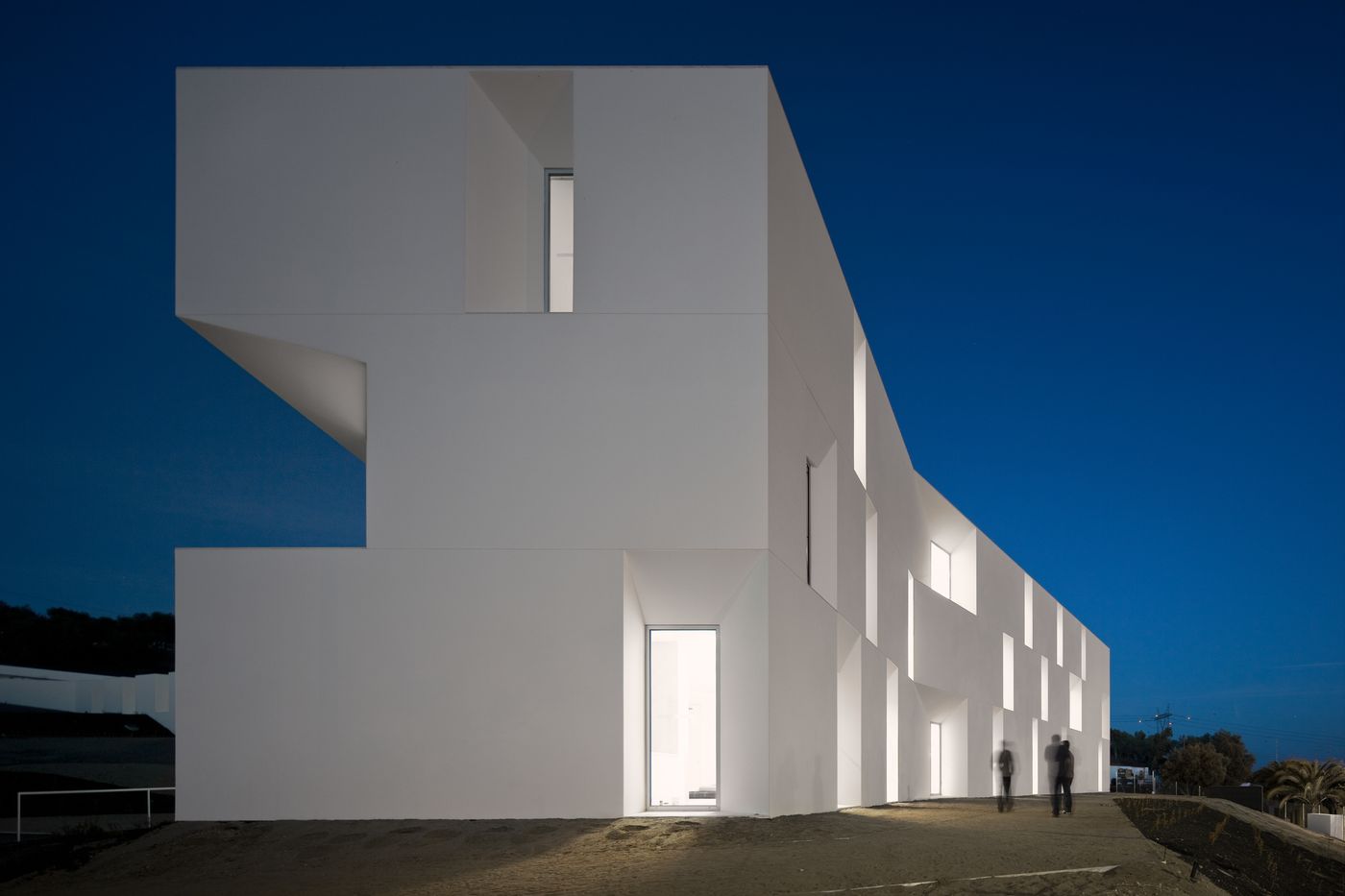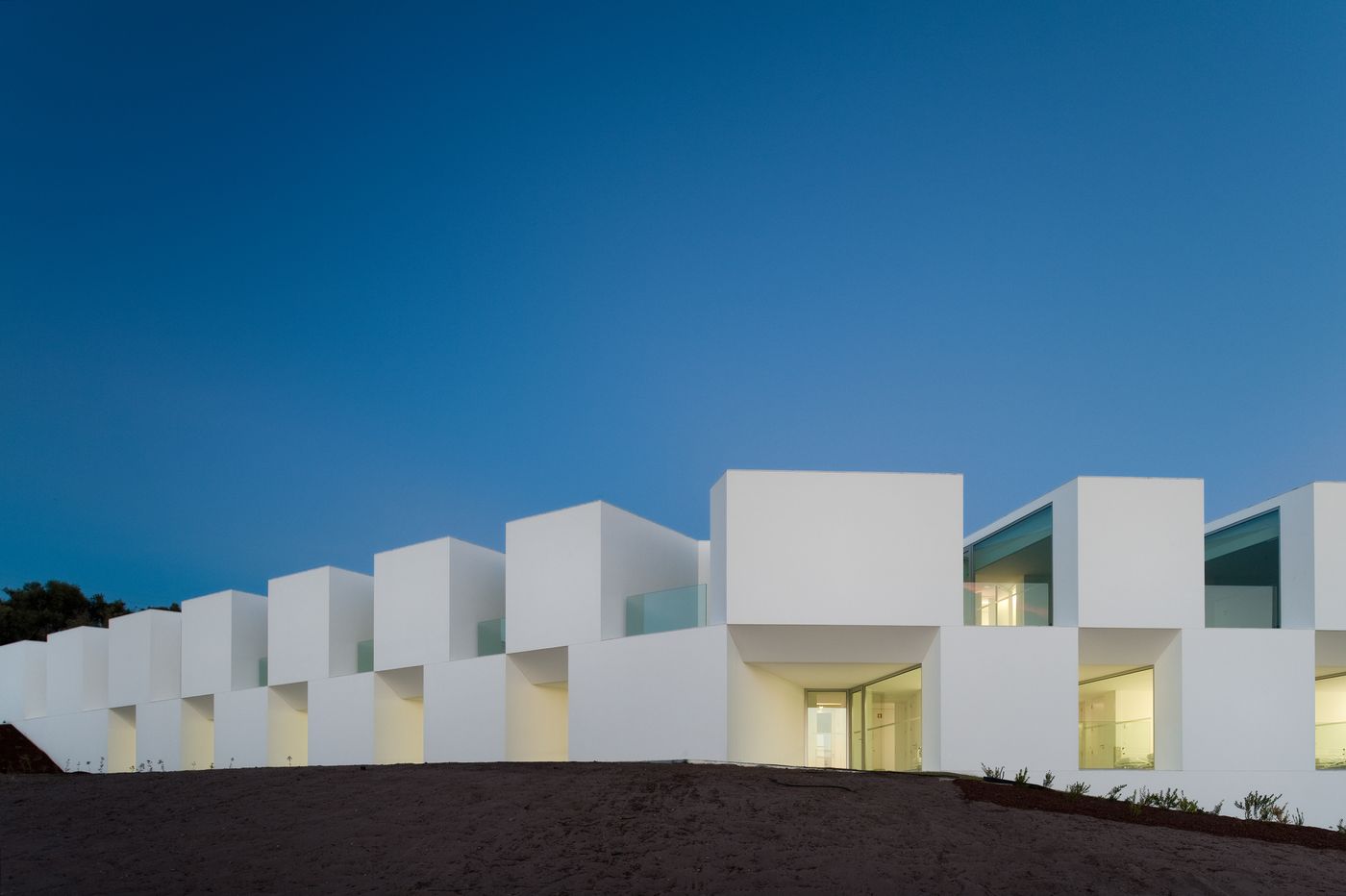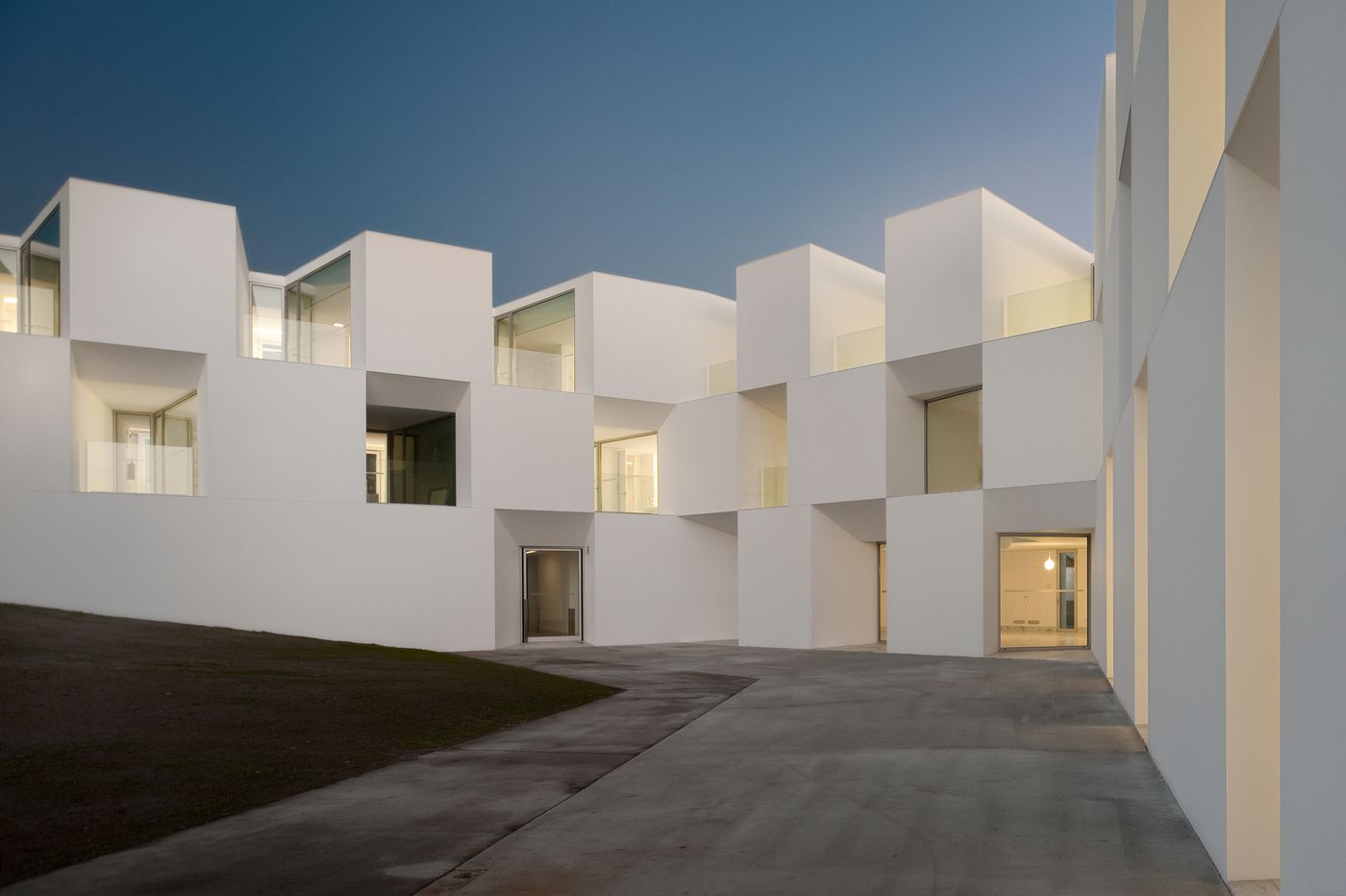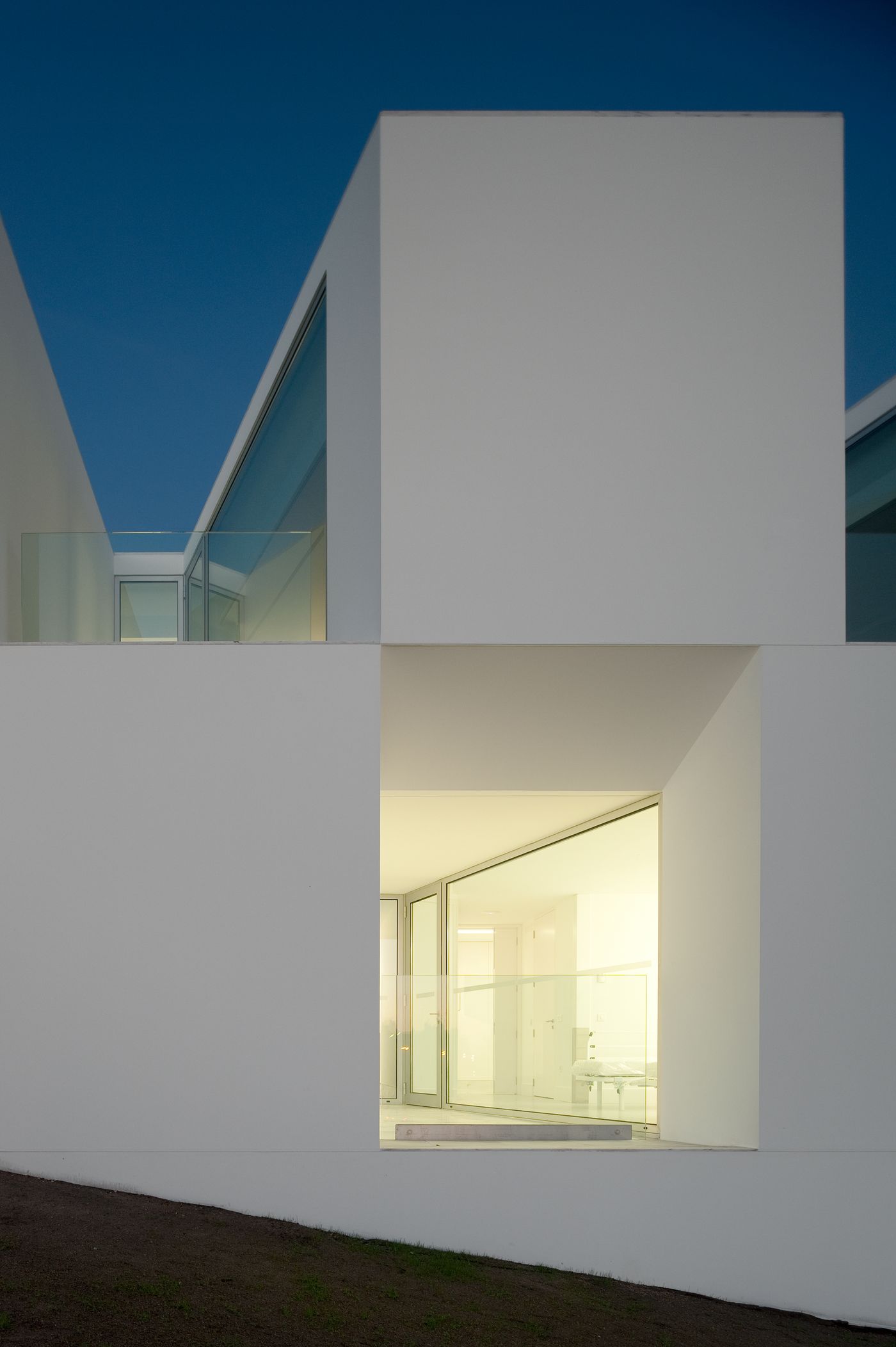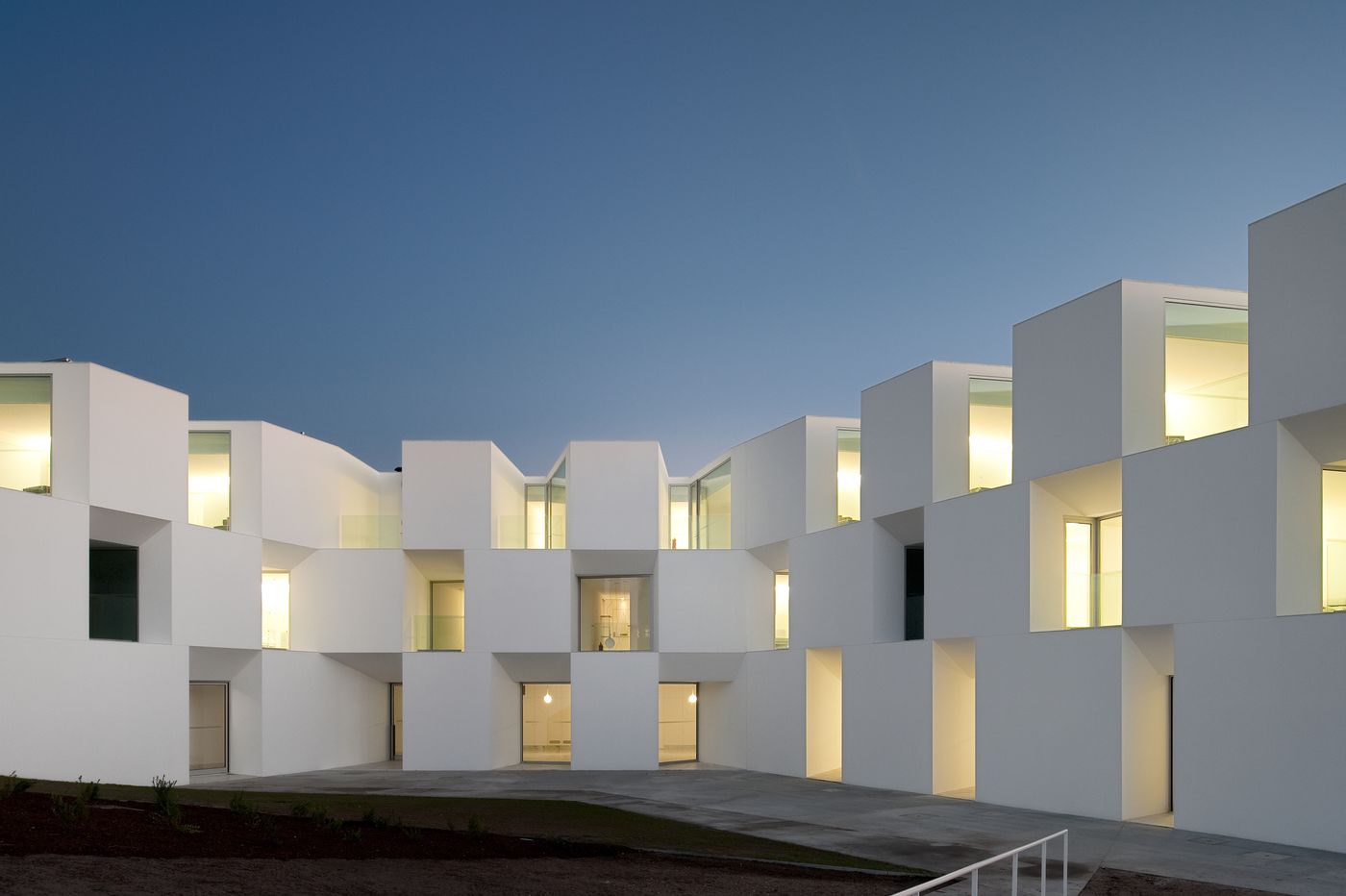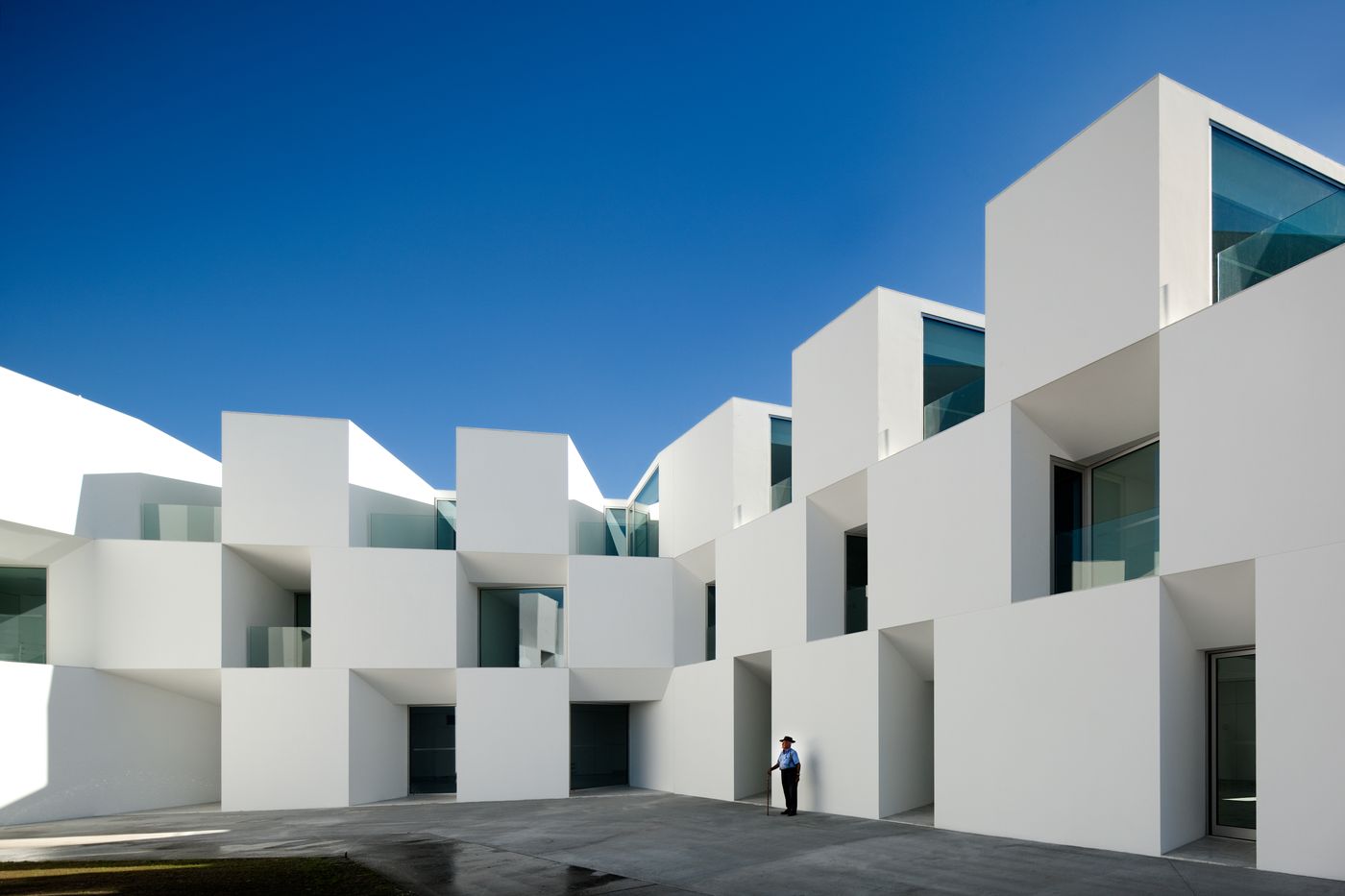
The Nursing home of Aires Mateus Architects through the eyes of Fernando Guerra
Words by Marcia Argyriades
Location
Alcácer do Sal, Portugal
The Nursing home of Aires Mateus Architects through the eyes of Fernando Guerra
Words by Marcia Argyriades
Alcácer do Sal, Portugal
Alcácer do Sal, Portugal
Location
Up until now, the image of a nursing home rarely conjures anything as striking as the design showcased here. Portuguese architects Aires Mateus have redefined the architectural concept of a nursing home with their project in Alcácer do Sal, Portugal. Their design reflects a thoughtful and sensitive understanding of the unique needs, rules, and values of the elderly—a micro-society with its own distinct lifestyle.
This innovative nursing home blends the luxury of a hotel with the functionality of a hospital. Aires Mateus reinterpreted the traditional program by striking a balance between social interaction and solitude, offering both communal and private spaces for its residents. The design integrates independent units into a cohesive structure, resulting in a layout that is both expressive and purposeful.
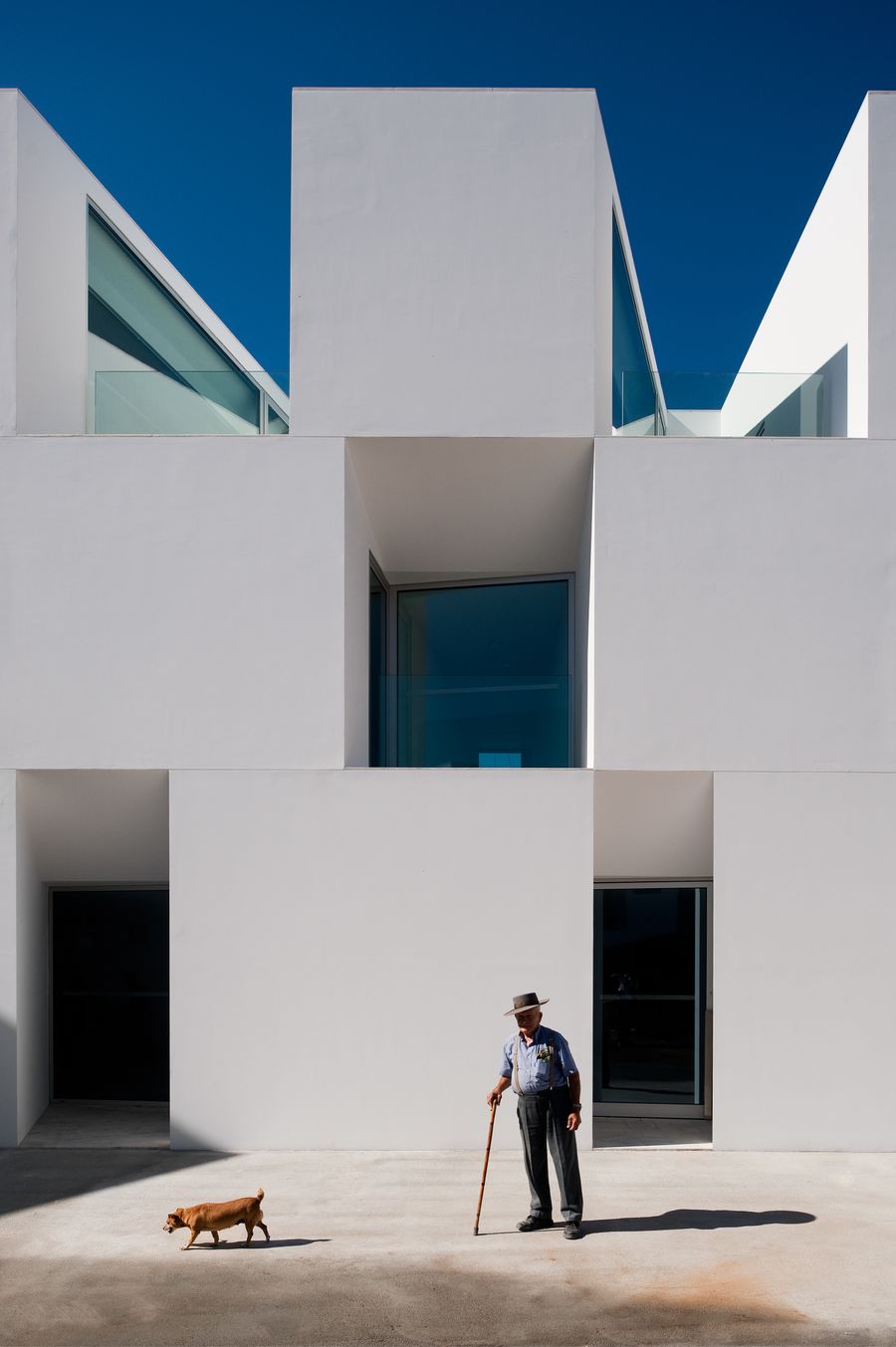
Photo © Fernando Guerra, FG+SG Architectural Photography.

Photo © Fernando Guerra, FG+SG Architectural Photography.
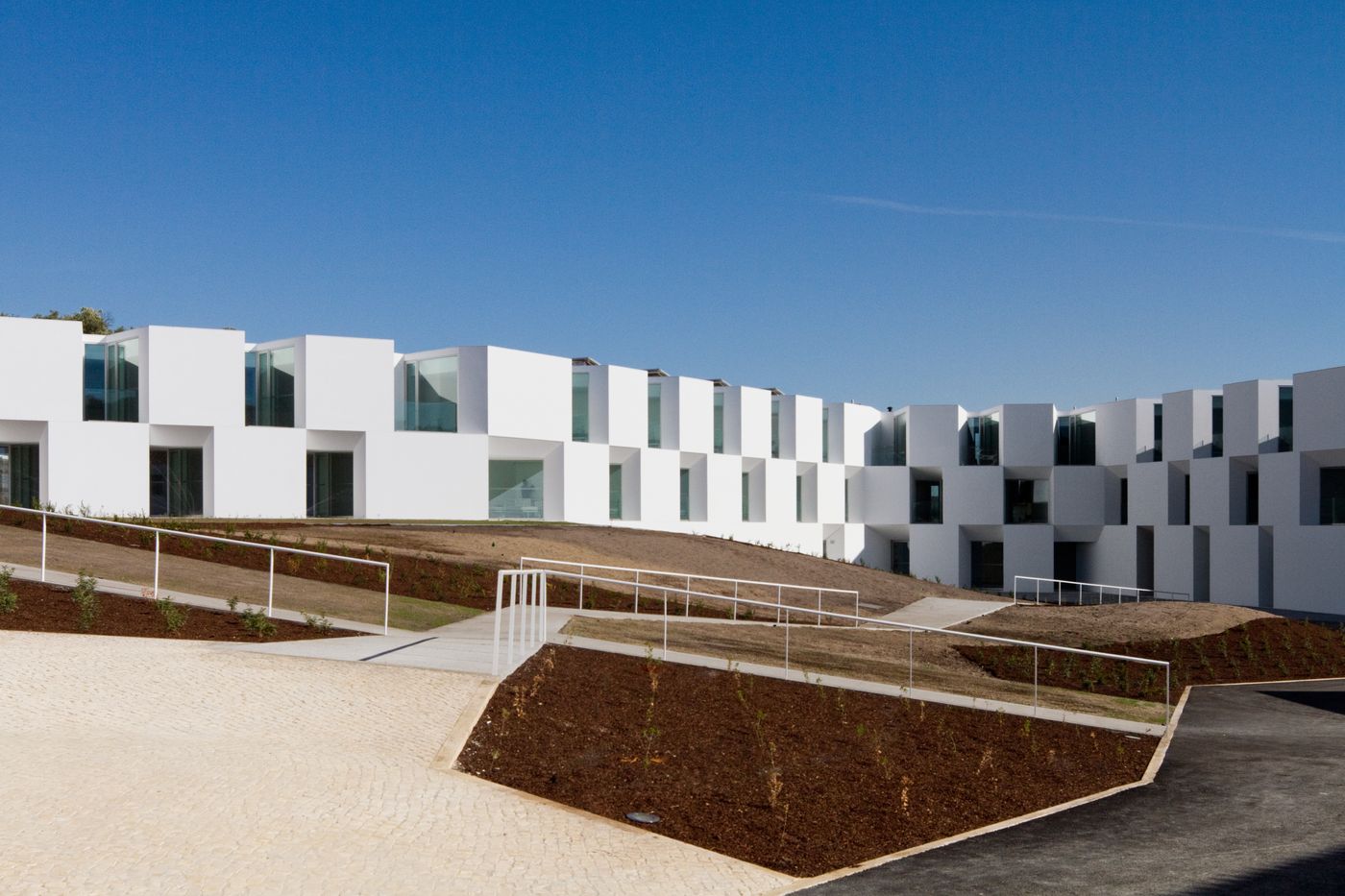
Photo © Fernando Guerra, FG+SG Architectural Photography.

Photo © Fernando Guerra, FG+SG Architectural Photography.
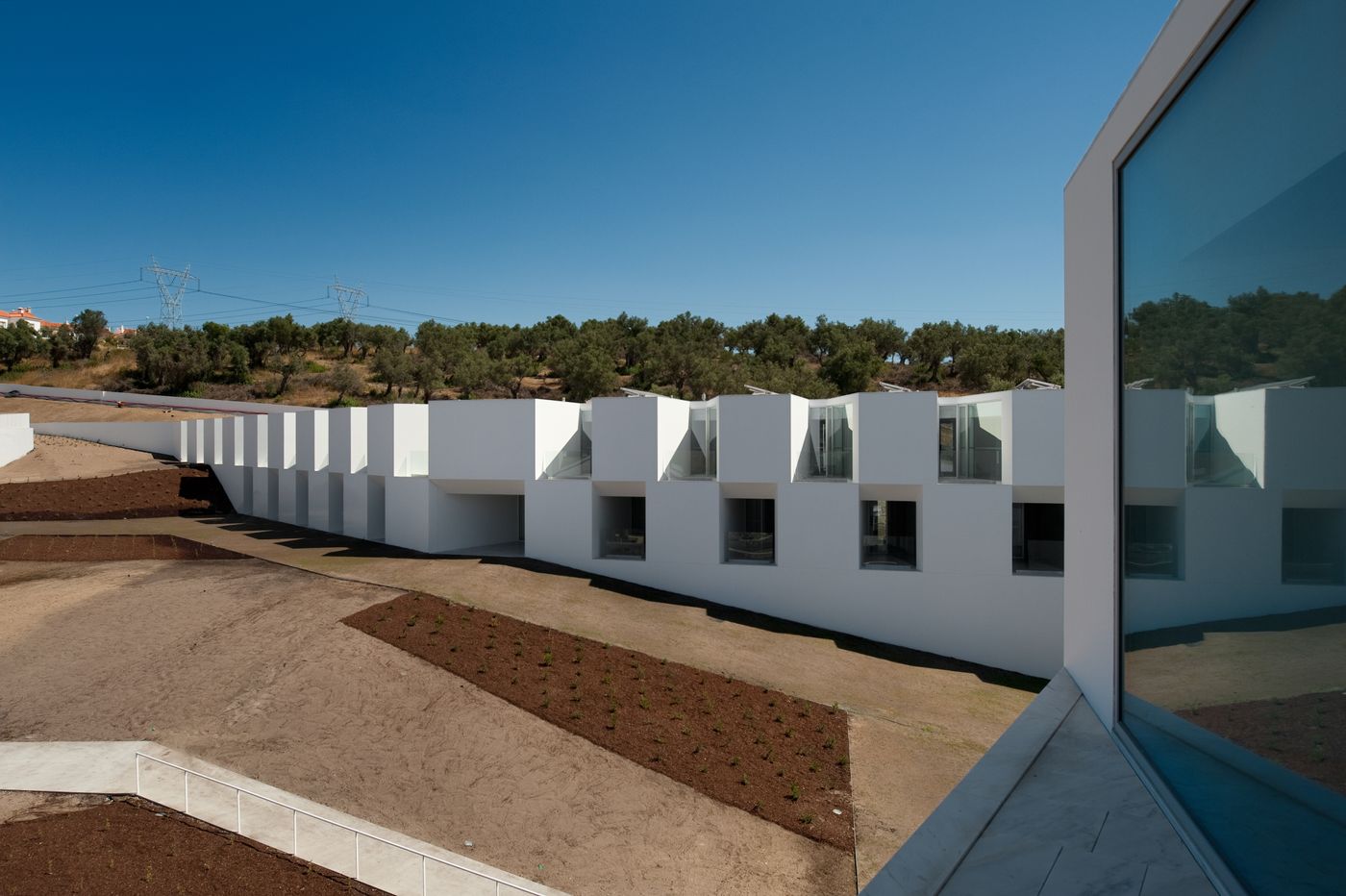
Photo © Fernando Guerra, FG+SG Architectural Photography.

Photo © Fernando Guerra, FG+SG Architectural Photography.
The reduced mobility of the elderly informed the project’s design. Aires Mateus conceptualized movement as an emotional and sensory journey, making every displacement within the space an experience in itself. The distances between the independent units were meticulously planned to turn “path into life” and “time into form.” The minimalist structure emerges naturally from the landscape, functioning as a wall that organizes the plot, limits open space, and harmonizes with the topography.
The façade of the building, although uniformly white, resembles a checkerboard, with strategically placed recesses that provide shade and frame the glazing. The structure twists across the site, rising and falling with the landscape. In some areas, the landscaped garden merges with the roof, creating a seamless integration with nature. The geometric forms and large openings, complemented by recessed balconies for sun shading, demonstrate a keen understanding of functionality and aesthetics. The building’s design is so well integrated into the site that it seems to vanish into the hill at one end, with access even provided to the rooftop.
Inside, the minimalism and luxury of the exterior continue. The interiors feature a clean, all-white palette with touches of light gray. Communal spaces are clad in white marble with light gray veins, accented by Artemide Castore Suspension lighting that adds an elegant touch. The walls are whitewashed, with subtle linear detailing on the ceilings. Resident rooms maintain this pristine design, featuring anti-bacterial, light-gray hospital flooring for practicality.
However, while the minimalist interiors are visually appealing, the lack of visual contrast between surfaces could pose challenges for the elderly, particularly those with impaired vision. The uniformity may make it difficult for residents to distinguish between walls and floors or to locate handrails, potentially impacting their navigation and safety.
Architecturally, this is an extraordinary project. The access to outdoor spaces from each room, coupled with private courtyards for every resident, enhances the quality of life and underscores the importance of natural surroundings for the elderly. Aires Mateus has demonstrated that nursing homes need not adhere to traditional, uninspired designs. This project serves as a testament to the possibilities of creating spaces that are functional, beautiful, and sensitive to the needs of their inhabitants.
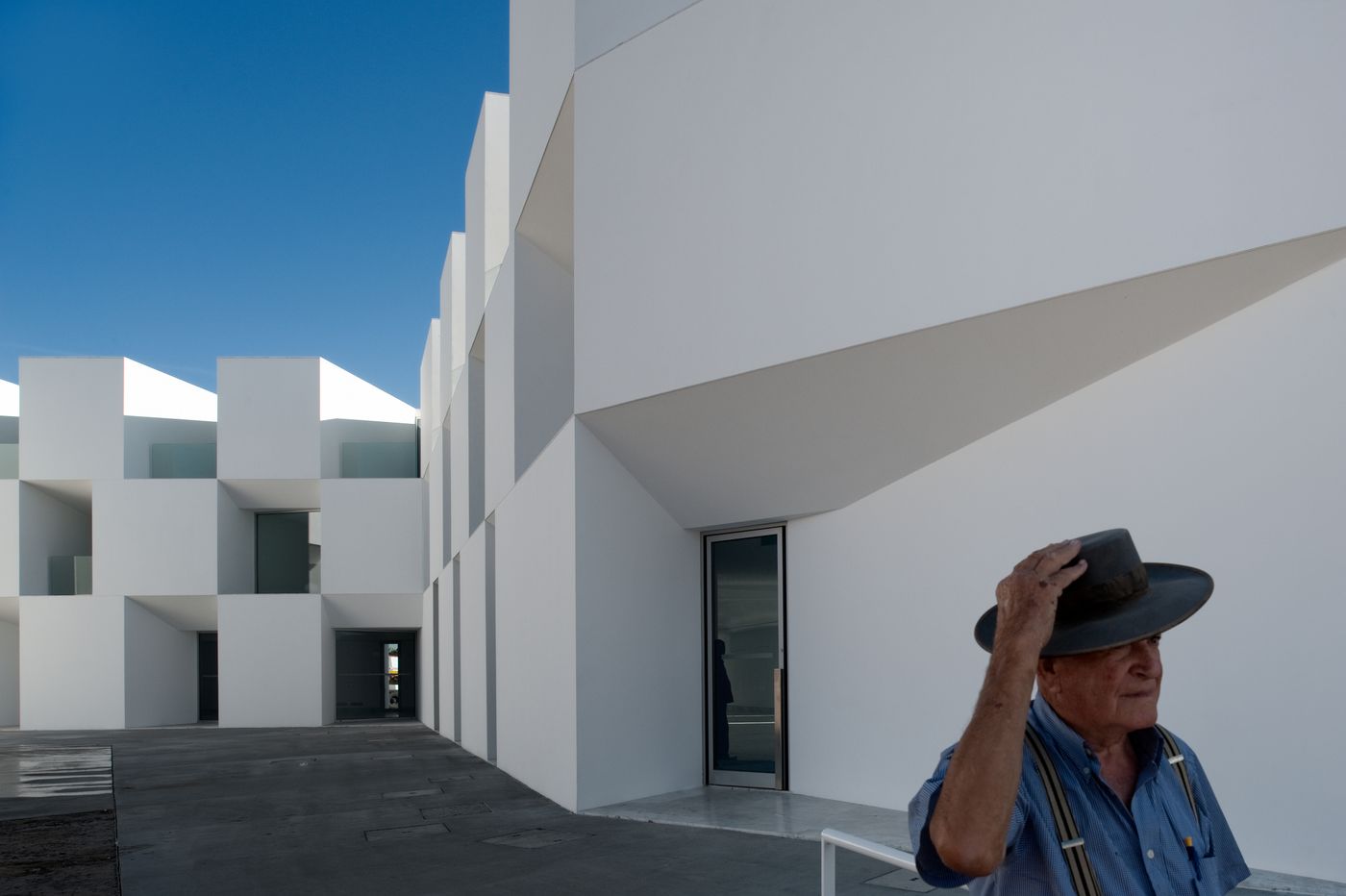
Photo © Fernando Guerra, FG+SG Architectural Photography.
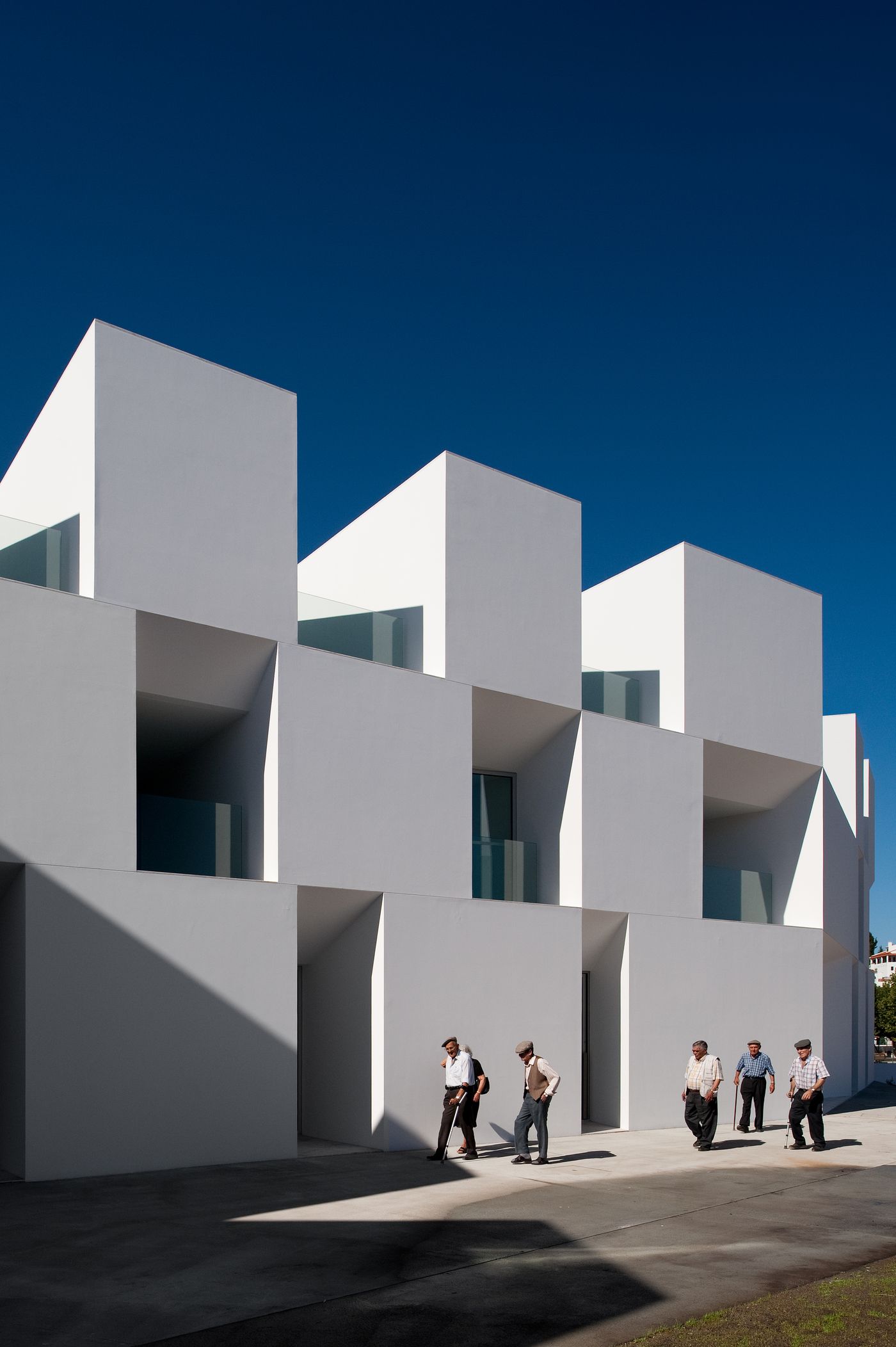
Photo © Fernando Guerra, FG+SG Architectural Photography.
Name of the project: Nursing home in Alcácer do Sal
Location: Alcácer do Sal (Portugal)
Date of project: 2006-2007
Date of construction: 2008-2010
Architects: Francisco Aires Mateus and Manuel Aires Mateus
Collaborators: Giacomo Brenna, Paola Marini, Anna Bacchetta, Miguel Pereira
Client: Santa Casa da Misericordia de Alcácer do Sal
Constructor: Ramos Catarino, Sa
Engineer: Engitarget, lda
Landscape architecture: ABAP Luis Alçada Batista
Footprint Area: 1560 m2
Floor Gross Area: 3640 m2
Plot area: 10435 m2
photographer: Fernando Guerra, FG+SG Architectural Photography
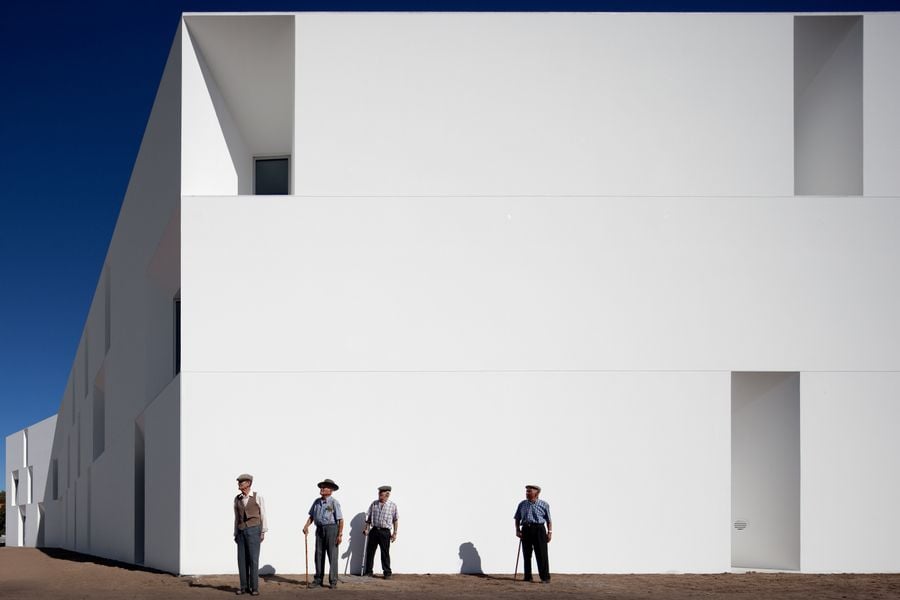
Photo © Fernando Guerra, FG+SG Architectural Photography.
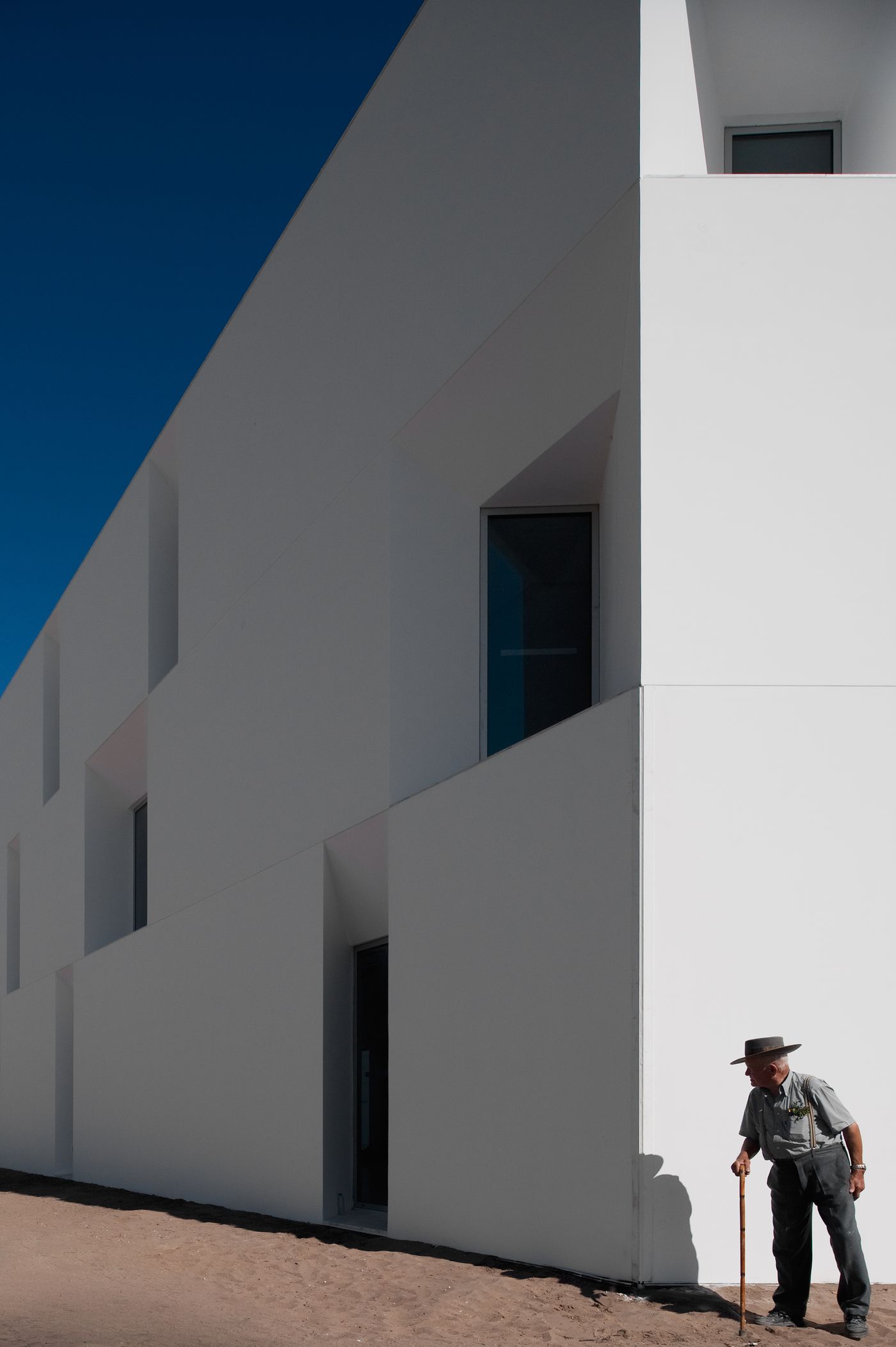
Photo © Fernando Guerra, FG+SG Architectural Photography.
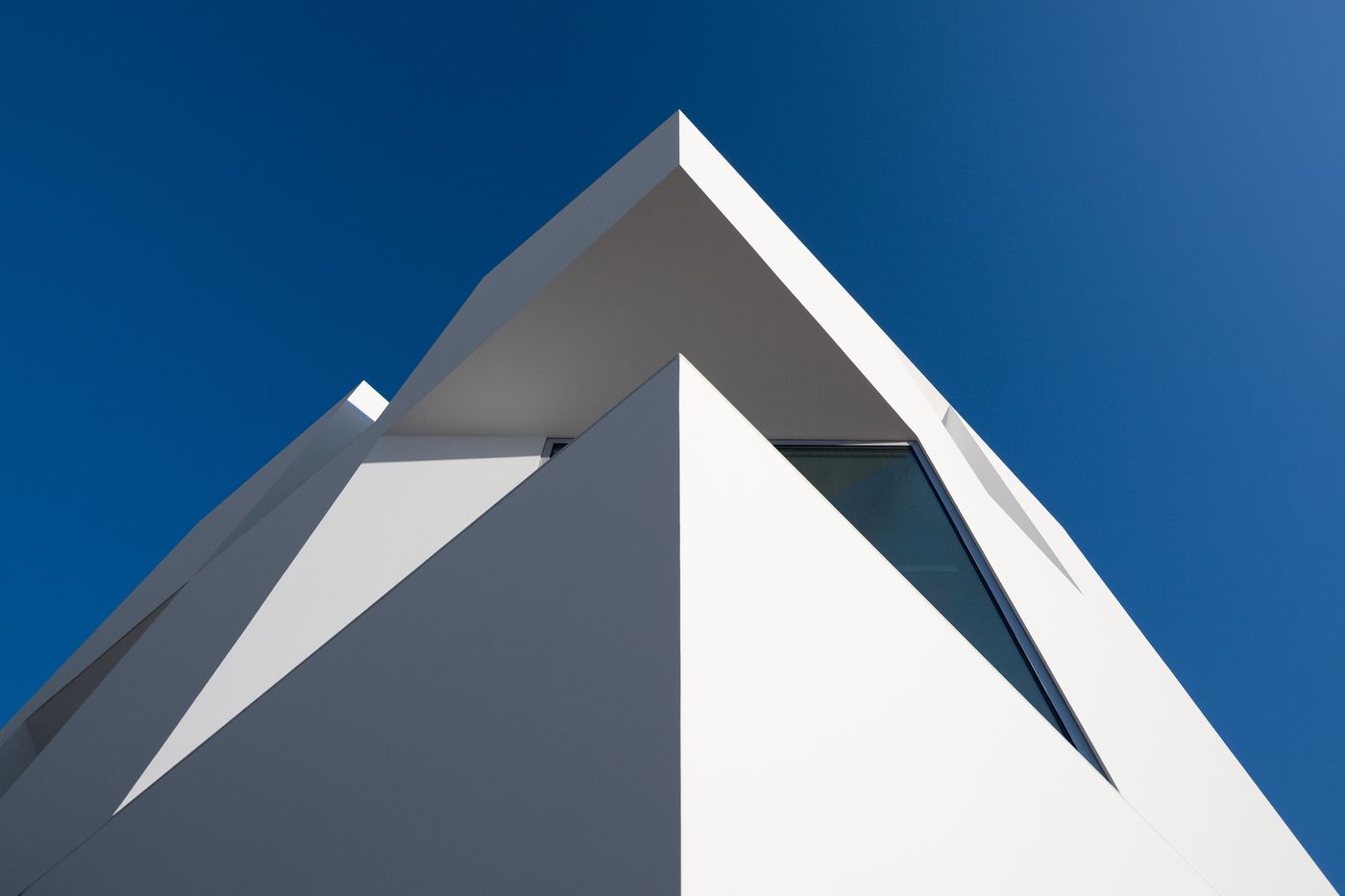
Photo © Fernando Guerra, FG+SG Architectural Photography.
